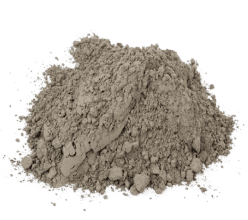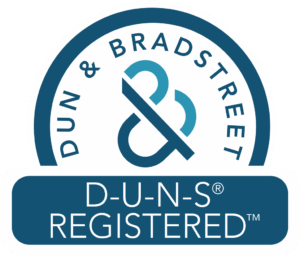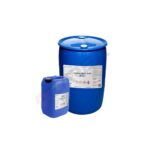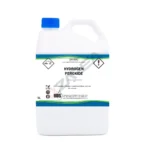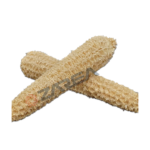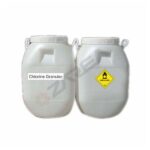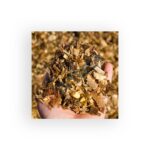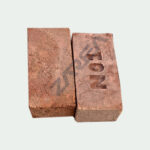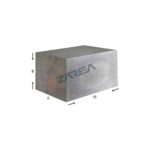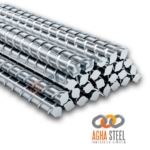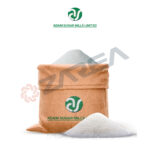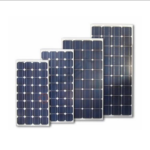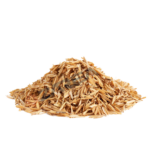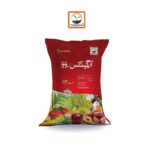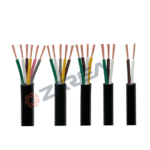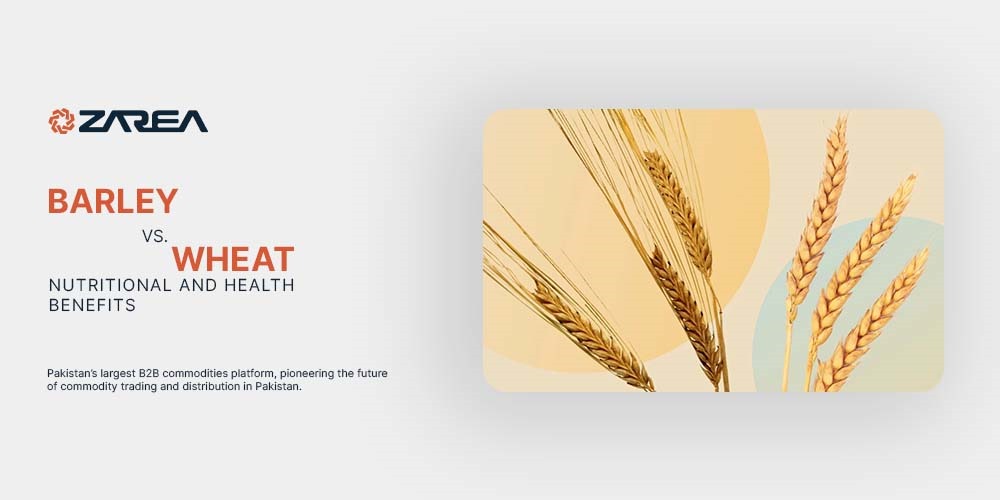
Barley vs Wheat | Nutritional and Health Benefits
- February 15, 2025
Introduction – Barley:
Barley vs wheat, among the oldest cultivated grains globally, has served as a key food source for humans for millennia. People commonly eat barley, a whole grain packed with nutrients, for its health advantages, adaptability, and role in a balanced diet. Chefs utilize it in soups, salads, breads, and drinks, rendering it a crucial component in worldwide culinary practices.
In 2022, barley ranked fourth in grain production with 155 million tonnes, trailing maize, wheat, and rice. Worldwide, farmers utilize 70% of barley output as animal feed, whereas breweries employ 30% as a fermentable material for beer, further distilling it into whisky and including it in different food products. Cooks use it in soups, stews, and barley bread across different cultures.
This article examines the nutritional characteristics of barley vs wheat, their health advantages, and different methods to incorporate it into your meals.
Barley vs Wheat Summary:
Wheat vs barley are adaptable, commonly utilized cereal grains. Farmers primarily utilize wheat as a food source in various regions, while brewers predominantly employ barley for brewing beer and for livestock feed. People around the globe commonly eat both barley and wheat, which are whole grains. Some individuals see them as identical, yet they are truly distinct cereals, even though they belong to the same family.
While there is no notable difference in nutritional comparison, wheat serves as a superior source of vitamins and minerals.
Nutritional Difference:
There is no notable difference in the nutritional value of wheat and barley. Experts regard them as nutritional treasures because they serve as strong sources of protein, carbohydrates, fiber, vital vitamins, and minerals. Refer to the macronutrient comparison chart for additional details.
Nutritional Profile of Barley:
Cooked barley contains 69% water, 28% carbohydrates, 2% protein, and 0.4% fat (table). In a 100-gram (3.5 oz) reference portion, cooked barley delivers 515 kilojoules (123 kcal) of energy and serves as a good source (10% or higher of the Daily Value) of vital nutrients, such as dietary fibre, the B vitamin niacin , and minerals like iron and manganese (table).
Barley is a grain that is low in fat and high in fiber, rich in vital vitamins and minerals. Here is the nutritional breakdown for one cup (157g) of cooked barley:
- Calories: 193
- Carbohydrates: 44.3 grams
- Protein content: 3.5g
- Fiber content: 6g
- Fat: 0.7 grams
- Vitamins & Minerals: Abundant in B vitamins, iron, magnesium, phosphorus, and selenium.
Types of Barley:
Barley exists in various forms, each possessing distinct nutritional and culinary characteristics:
- Hulled Barley – Whole grain barley with merely the outer hull taken off. Rich in fiber and nutrients.
- Pearl Barley – Refined to eliminate the bran layer, resulting in easier cooking but reduced fiber content.
- Barley Flour – Utilized for baking bread, muffins, and other baked items.
- Barley Water – An age-old beverage recognized for its refreshing and cleansing properties.
Health Benefits of barley vs wheat:
Health Canada and the US Food and Drug Administration state that ingesting a minimum of 3 grams daily of barley beta-glucan can reduce blood cholesterol levels, which is a risk factor for heart diseases. Consuming whole-grain barley, which is high in fiber, enhances blood sugar regulation (i.e., lowers blood glucose response after a meal). Eating breakfast cereals with barley for weeks to months enhances cholesterol levels and glucose control.
Barley has gluten, rendering it an inappropriate grain for those with gluten-related conditions, including coeliac disease, non-coeliac gluten sensitivity, and individuals with wheat allergies. However, certain patients with a wheat allergy may be able to tolerate barley.
Barley is also richer in copper, which aids in the creation of red blood cells and body tissues and supports the proper functioning of the endocrine and cardiovascular systems. It is also engaged in the coloration of skin and hair.
Barley contains a greater amount of dietary fiber. Dietary fiber reduces the risk of developing type 2 diabetes, avoids constipation, aids in weight loss, and speeds up intestinal transit time. In addition to fiber, wheat is an excellent source of phytochemicals that can positively impact health: for instance, lignans exhibit antitumor effects on colon cancer cells.
Promotes Digestive Wellness
- Barley contains high levels of both soluble and insoluble fiber, enhancing digestion and supporting regular bowel function.
- It aids in avoiding constipation and promotes a balanced gut microbiome.
Enhances Cardiac Wellness
- Includes beta-glucan, a variety of fiber that aids in lowering levels of bad cholesterol (LDL).
- Might reduce blood pressure and enhance heart health.
Assists in Weight Control
- A high fiber content encourages a sense of satiety, leading to a decrease in total calorie consumption.
- Aids in controlling blood sugar levels, avoiding abrupt increases and decreases.
Regulates Blood Glucose and Diabetes
- Barley has a low glycemic index, making it an ideal option for those with diabetes.
- The existence of beta-glucan reduces sugar absorption, maintaining stable blood sugar levels.
Enhances Bone Density
- High in magnesium, phosphorus, and calcium, which are vital for robust bones and teeth.
- Aids in preventing osteoporosis and preserving bone density.
Enhances Immune Function and Decreases Inflammation
- Barley includes antioxidants such as selenium and vitamin E, which bolster the immune system.
- Assists in lowering inflammation and oxidative stress within the body.
How to Include Barley in Your Diet:
Various traditional foods from Arabic, Assyrian, Israelite, Kurdish, and Persian cuisines utilize barley, having a long history of cultivation in the Middle East, such as keşkek, kashk, and murri. People customarily consume barley soup during Ramadan in Saudi Arabia. A classic Jewish stew, cholent, or hamin (in Hebrew), is frequently consumed on the Sabbath, featuring various recipes from both Mizrachi and Ashkenazi Jews; cooks created its earliest version as a barley porridge.
Barley is a flexible grain that can be added to a variety of meals. Here are several tasty and healthy methods to savor it:
- Barley Soup: A filling and fiber-packed dish perfect for chilly days.
- Barley Salad: Combined with vegetables, nuts, and olive oil for a revitalizing meal.
- Barley Bread: A more nutritious option compared to refined wheat bread.
- Barley Water: An herbal cleansing beverage with refreshing properties.
- Barley Porridge: A healthy breakfast choice featuring honey and fruit.
Barley vs. Wheat vs. Other Grains:
Wheat serves as a fundamental food source; it is utilized for producing bread, biscuits, crackers, pasta, bulgur, cookies, noodles, and various breakfast items, and, to a smaller degree, for drinks and animal feed.
- Barley is primarily utilized in brewing beer and making various alcoholic drinks. It is also commonly utilized as feed for livestock.
- Wheat and barley are both utilized for direct cooking.
Minerals
Wheat contains 0.5g more dietary fiber and has over twice the protein compared to barley. Considering the mineral composition of wheat and barley, barley excels since it has significantly more selenium, modestly greater phosphorus, and a bit more copper, zinc, magnesium, and manganese. Conversely, wheat has a lower sodium content.
Vitamins
How do the vitamins compare? Barley contains significantly more vitamins B1, B2, B3, B6, A, and folate. It additionally contains four times the amount of vitamin A. Therefore, in this regard, barley is the champion.
| Grain | Fiber Content | Protein | Best For |
|---|---|---|---|
| Barley | High (6g per cup) | Moderate (3.5g) | Heart health, digestion, weight loss |
| Rice | Low (0.6g per cup) | Low (2.7g) | Quick energy, easy digestion |
| Oats | High (4g per cup) | High (5.5g) | Lowering cholesterol, breakfast options |
| Quinoa | Moderate (2.8g per cup) | High (8g) | Protein intake, gluten-free diets |
Uses:
Farmers utilize approximately 70% of global barley output as animal feed, such as for feeding cattle in western Canada. In 2014, researchers developed a process involving enzymes to produce a high-protein fish feed from barley, appropriate for carnivorous fish like trout and salmon.
Potential Side Effects of Barley:
Although barley is generally safe for the majority, certain individuals need to be careful:
- Gluten Intolerance: Barley has gluten, rendering it inappropriate for individuals with celiac disease.
- Digestive Problems: High fiber consumption can lead to bloating or gas in those who are sensitive.
- Blood Sugar Levels: Individuals taking diabetes medication need to keep track of their sugar levels when eating barley.
Final Thoughts:
Barley is a wholesome and adaptable whole grain rich in fiber, vitamins, and vital minerals. Its health advantages encompass better digestion, cardiovascular health, weight regulation, and blood sugar management. Including barley in your meals allows you to benefit from its many advantages while promoting a healthier way of living.
Boasting a rich history and contemporary significance, barley continues to be a superb option for balanced nutrition and overall health!
FAQ’s:
Is barley better than wheat?
Both have gluten, rendering them inappropriate for individuals with celiac disease or gluten intolerance. Although both grains are healthy, barley contains more fiber and cholesterol-reducing beta-glucan and retains more nutrients during processing compared to wheat.
Which is better barley or wheat?
You might think about transitioning to jau even if you aren’t facing weight problems because it is rich in iron, calcium, proteins, and vitamin E — the last nutrient is absent in wheat. According to the American Journal of Clinical Nutrition, the beta glucan present in jau has been shown to assist in reducing cholesterol levels.
Is it okay to eat barley every day?
Consuming 3.6 grams of barley each day as a fiber source may lower the risk of heart disease. Elevated cholesterol. Consuming 3-12 grams of barley each day appears to lower total and low-density lipoprotein (LDL or “bad”) cholesterol levels in adults suffering from high cholesterol.
Is barley healthier than rice?
Farro and barley, as whole grains, offer greater fiber content and health advantages compared to white pasta or white rice. Barley and farro share similarities in being high in fiber and containing protein as well. The fiber in barley and farro contributes to reducing cholesterol levels and boosting the immune system.
How long to cook barley?
Heat until boiling over high heat, then reduce to a simmer. Prepare the barley until it is soft but still has a chewy texture, roughly 25–30 minutes for pearl barley and 40–50 minutes for hulled barley. Include a bit more water if the skillet becomes dry. If necessary, drain the barley and use a fork to fluff it up.
